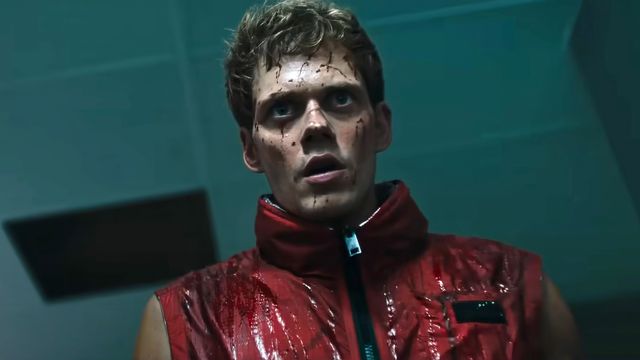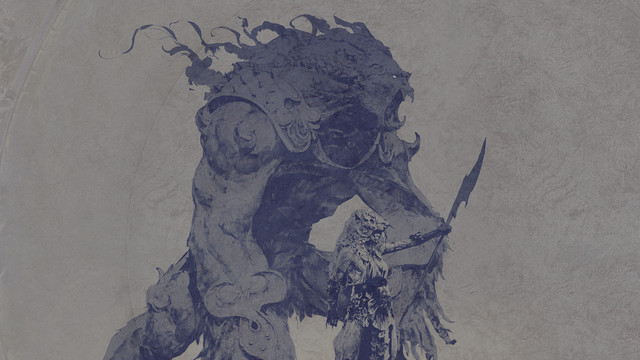After countless reports of crunch, impossibly tight turnarounds, and drastically low pay for long hours, Marvel’s VFX workers are fighting back.
It was announced earlier this week that over 50 VFX workers at Marvel voted to file for a union election at the National Labor Relations Board to be represented by the International Alliance of Theatrical Stage Employees (IATSE). And, according to five organizers and Marvel VFX workers IGN spoke to in the wake of the announcement, the move isn’t just something that’s been a long time coming in an entertainment industry where nearly every other faction is unionized – it’s necessary to even make it possible to continue doing this work.
“These are companies which are making billions of dollars off of our work, so the reasonableness of our demands – asking just to be put on the same deal as the people working alongside of us and be given access to health care and a pension fund and the basic protections of work – we feel that this is one of the most reasonable demands that anyone's ever made,” Mark Patch, a VFX organizer for IATSE and a former coordinator on Disney+’s WandaVision, tells IGN.
These basic protections, the workers say, are things they’ve felt forced to demand.
“There's an effort to get by with as few people as possible and wait for us to basically raise hell and say, ‘We are not sleeping anymore. We haven’t seen our families. We're working every weekend,’ “ Patch says. “Then that's when they say, ‘Oh, okay, we'll get some more bodies’ sometimes.”
In attempting to join IATSE, the Marvel VFX workers are looking to be protected by the terms under IATSE’s Basic Agreement, which includes minimum wage increases, the MPI pension and health care plan, turnaround improvements, meal penalty improvements, and more. Basically, as Patch notes, it’s making sure that VFX is no longer “the wild west, but ultimately this is also about respect for the work that we do, how essential we are for the filmmaking pipeline.”
And while the move happens to come at a time where the Writers Guild of America (WGA) and The Screen Actors Guild – American Federation of Television and Radio Artists (SAG-AFTRA) are on strike, fighting for their members from the picket lines, it’s not something the VFX workers waited for.
“We're not waiting,” Patch says. “This is about justice for VFX workers. You're going to see these similar campaigns rolling out across town. It's a movement that we're joining.”
When I ask if, even still, seeing WGA and SAG-AFTRA’s solidarity galvanized them, Patch pushes back that “galvanized” might not even be strong enough of a word: “The fire is burning, and this is something that has exploded like a bomb.”
‘The McDonald’s of Content’
Efforts to unionize within Marvel truly started to ramp up with a “grounded plan” in August of 2022, says Alex Torres, an organizer who worked on Marvel’s Runaways. It’s worth mentioning that that places it in the midst of the MCU’s absolutely jam-packed Phase 4, and the workers and organizers that IGN spoke with agree that the onslaught of content helped make an already difficult and understaffed job even more of a grind.
To put it in perspective: between the Disney+ series and theatrical feature films, Marvel’s Phase 4 had a total runtime of approximately 60 hours. That’s significantly longer than the runtimes of Phases 1-3 combined.
“When you're turning a 90-minute movie into a 10-hour feature basically, you're doing 10 times the amount of work within the same, or even sometimes a shorter period of time,” Patch points out. “Particularly from Marvel, we certainly have seen since COVID and streaming the amount of demands on our time and mental and physical health just explode.”
“With Disney+ and its advent, there was a bunch of new content that was being requested for the service, but we actually were finding that visual effects workers were so tapped out and being spread out so thin that shows were waiting in line to essentially get their work done,” Torres adds.
Gabrielle Levesque, one of the workers that IGN spoke with, can speak to the situation with quite a bit of experience, as she worked with Marvel before and after the launch of Disney+. Her credits include Avengers: Infinity War and Endgame, Spider-Man: Far From Home, and the upcoming Captain America: Brave New World.
“What you're expected to do each day and how the shows are run, it definitely feels more like a conveyor belt nowadays than necessarily each project being given its own thought and time,” she says. “As opposed to now where it's like, ‘well, this is coming up and now we have to do this, and this is coming up, we have to do this.’ It really becomes like the McDonald's of content.”
It’s certainly something Patch felt firsthand on WandaVision.
“For us, I was on WandaVision and they told us, ‘Well, you're not going to have any more days off in the next three months until we deliver episode 10.’ We were already working 18-hour days,” he says. “I was like, ‘How is this supposed to be sustainable?’ “
And, as those we spoke to pointed out, Disney shows no signs of slowing down. Despite Disney CEO Bob Iger’s recent insistence that the company would focus on quality over quantity, the company still has a full lineup of Marvel movies and shows, having announced Phases 5 and 6 at least year’s San Diego Comic-Con, as well as more Avatar sequels, Star Wars films and TV series, and other thoroughly VFX-heavy projects.
“It's like, well, ‘who do you want to do this work?’ ” Patch asks. “Because the folks who are making this happen for you right now are getting drowned.”
“Burning out,” James Dornoff, who’s worked with Marvel on the vendor side on Captain America: The Winter Soldier, reshoots of Doctor Strange, and additional photography on Eternals, adds. “Or have burned out.”
As Patch explains, VFX workers currently get paid on a weekly flat rate. Whether they work 12-hour days or 18-hour days, five-day weeks or seven-day weeks, they get paid the same amount. That means no overtime, no extra pay for working through lunch or through breaks, and no protections against tight turnarounds that essentially mandate the crunch.
“That's one of the big things for me is that our time resets,” Dornoff agrees. “If we work seven days or 14 days, or whatever it is, straight, we don't get that time and a half, double time all that next week. Our clock restarts.”
It is, essentially, a recipe for disaster: few workers, low pay, long hours, and executives who don’t understand the strains of what they ask for.
‘We’re Out of People’
The question Patch asks, of just who is expected to do all that work, is a real one – and an urgent one. Maggie Kraisamutr, an in-house artist who’s worked at almost every major Los Angeles studio except for Marvel (“and that’s for a reason,” she pointedly notes), says they’re quite literally running out of people who can take on this work, even with the amount of VFX that’s furnished to outside vendors.
“Like, across the globe, we're out of people,” Torres agrees. “But the order still keeps coming down. It still says just like Mark says, ‘oh, you got 10 days to finish this because that's what we need.’ “
And, when the workers are so understaffed and overworked, it’s something that will no doubt be reflected in the VFX itself. Ant-Man and the Wasp: Quantumania, for example, one of Marvel’s most recent releases, was one of the projects to be ravaged by critics for its special effects, but it’s not the only one.
“That happens pretty regularly,” Torres says. “Things do take a dive. You can kind of hear it in the press these days. You hear some detraction from people saying that, like, ‘Oh, these Marvel films feel too CGI,’ or something to that effect. Some of that really does come from the amount of corner-cutting that gets done in order to try and get these things out by X deadlines so that the studio ultimately can make all of its numbers that it needs to make so that it can make the maximum amount of profit.”
Those tight turnaround and hard deadlines, Kraisamutr says, are a constant problem for those in the industry. As an in-house compositor, Kraisamutr works along post-production to basically create fully realized storyboards, applying visual effects to them. In short, she describes, her job is to basically save studios from spending more money and going into reshoots.
But, no matter how much work needs to be done, the deadline for those in post-production remains the same.
“I think the issue is a lot of the times these decisions are being made on the executive side, and they're not creative people,” she says. “They don't understand the process. They're money people, so they have no idea how long this stuff takes. As far as they know, they just think we just push a button and it's done instantly, like AI. They think AI is a quick fix, but it's not. It takes thousands of people to touch upon a single shot.”
Dornoff agrees that that’s a huge problem in post-production at large. Basically, a film will get to the home stretch of being done, and an exec will request a change. That change, he says, ends up being a global process.
“Every shot that we had previously finaled has to now go through the pipeline, get redone, resurfaced, retextured, new renders, put on top, track that, animate, track, and then it's a whole new set of rework,” Dornoff says. “That still has to be done in that same timeline. The timeline doesn't change, because, again, in the press, they are expecting May 4th, Captain America comes out. Those timelines don't change, but it's us. We're the ones that have to take all that work and redo it.”
But, without the true power to push back on some of those deadlines that have already been announced in the press and to the industry at large, it leaves post-production with the short end of the stick, even though they want to make the projects look as good as possible.
“They like to exploit the fact that we really do like to do,” Torres says. “We like to make it look as best as possible. We end up losing because of it.”
‘Our Lives Are Ultimately Unsustainable’
The passion for the work, they all agree, is what keeps them going – and what powers them to take action into their own hands.
“I like the kind of problems we solve in this department, but if you make the job so difficult and so unsustainable, what do you expect us to do?” Kraisamutr says. “We want to save this job, so we're going to unionize. We're helping ourselves.”
It can be demoralizing, too, to work in such a union-friendly industry without being part of a union themselves, something IGN previously spoke to several VFX workers about. Kraisamutr recounts an experience while she was working on Disney’s The Muppets, where she was in a room of editors and a union representative went around to make sure everyone in the room was unionized. When Kraisamutr said she wasn’t, the representative was shocked.
The experience, she recalls, made her feel “secluded” as she worked alongside those who were protected by a union, and “really feeling the difference between, I don’t know, the classes of people that we fall under.”
After Kraisamutr shares that story, Levesque chimes in that she had nearly the same exact experience on Spider-Man: Far From Home.
“They (the union rep) looked at me and they go, ‘Are you camera or are you VFX?’ I went, ‘VFX.’ They're like, ‘Okay.’ They just kept walking,” she says. “It's just like, ‘cool, thanks. Okay, I get it.’ You just see it so starkly. You can't ignore it.”
When I ask them if it’s even still possible to work in the VFX industry without a union, Levesque says, “I don’t think so.”
“We are in this position now where we feel like our lives are ultimately unsustainable because we lack a portable healthcare plan that can travel from job to job,” Patch says. “We may work on a show for three months and then go for work from a new studio. That's a whole new health care plan, a new doctor, everything. We don't get a retirement fund or any sort of pension plan or 401K matching from an employer. We don't have anything to fall back on for retirement.”
“We also lack overtime protections, turnaround protections,” he continues. “We don't get meal penalties when we're forced to work through lunch, which is always.”
All of that, they stress, has led them to a breaking point. And it isn’t just a battle for Marvel’s VFX workers: they hope to lay the groundwork for the countless VFX artists who work alongside them, and the ones who come after them.
“We're going to make VFX’s voice heard because it's been 50 years since now since the first Star Wars was made and the modern VFX industry was created,” Patch says. “Half a century is a long time to wait for health care and overtime.”
Alex Stedman is a Senior News Editor with IGN, overseeing entertainment reporting. When she's not writing or editing, you can find her reading fantasy novels or playing Dungeons & Dragons.






